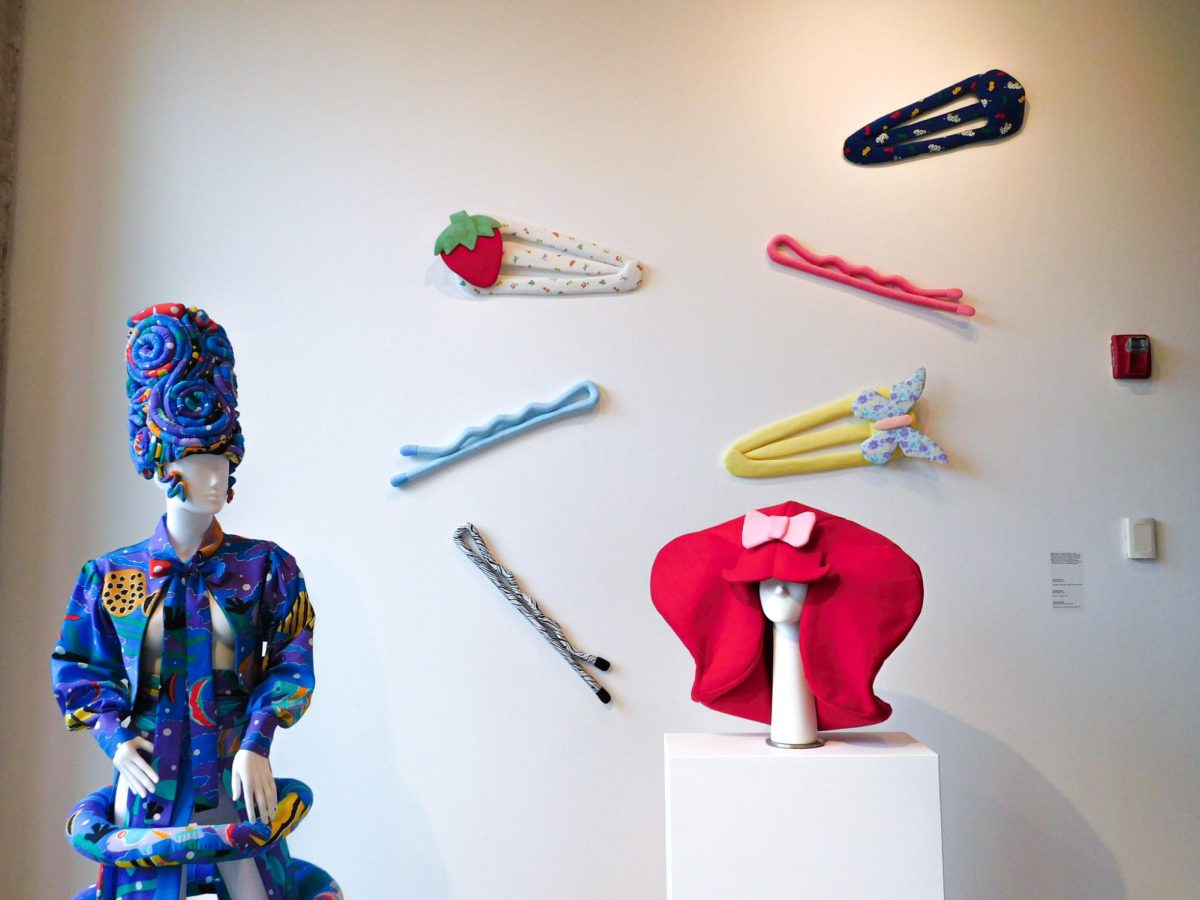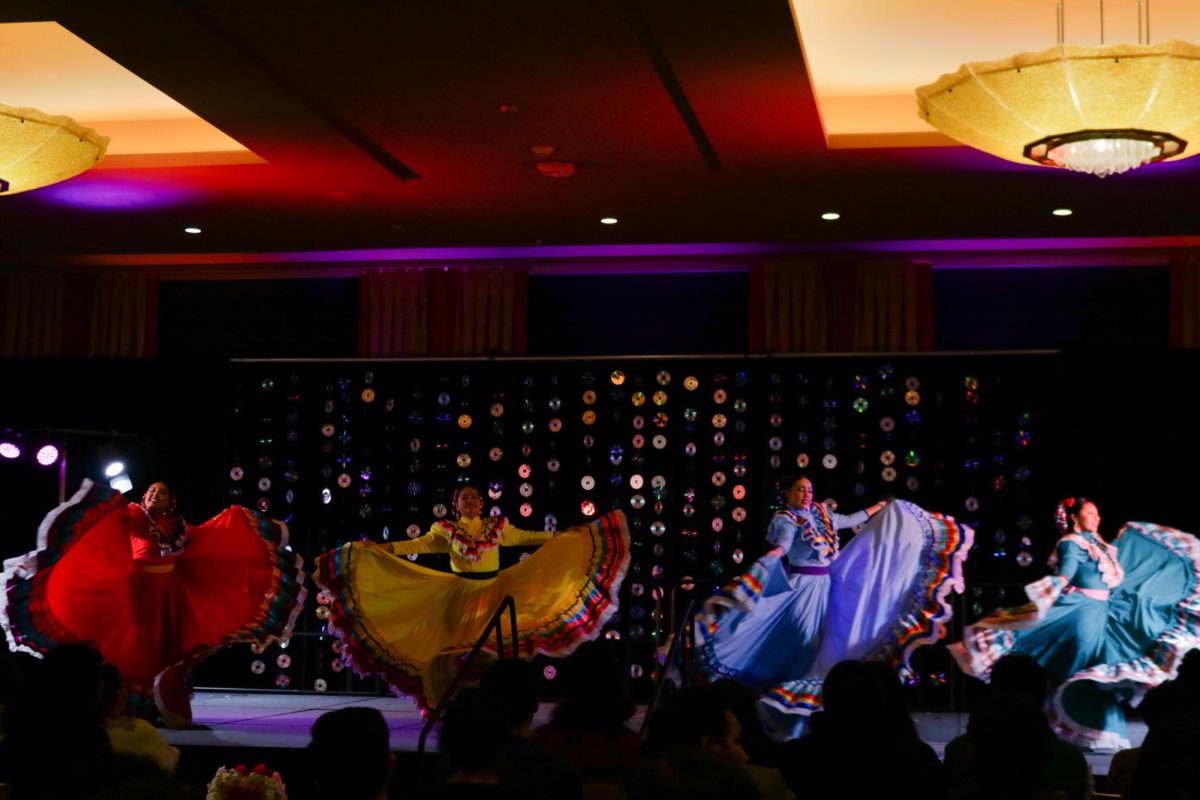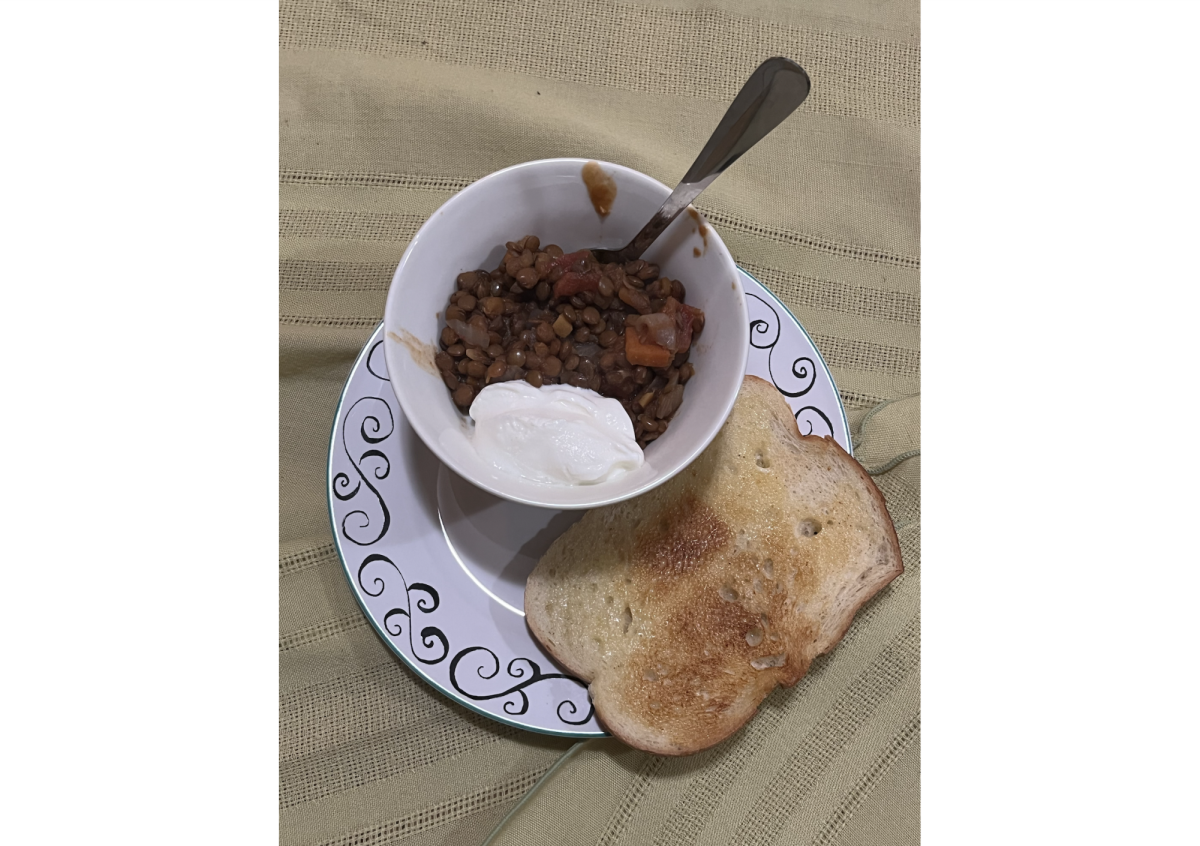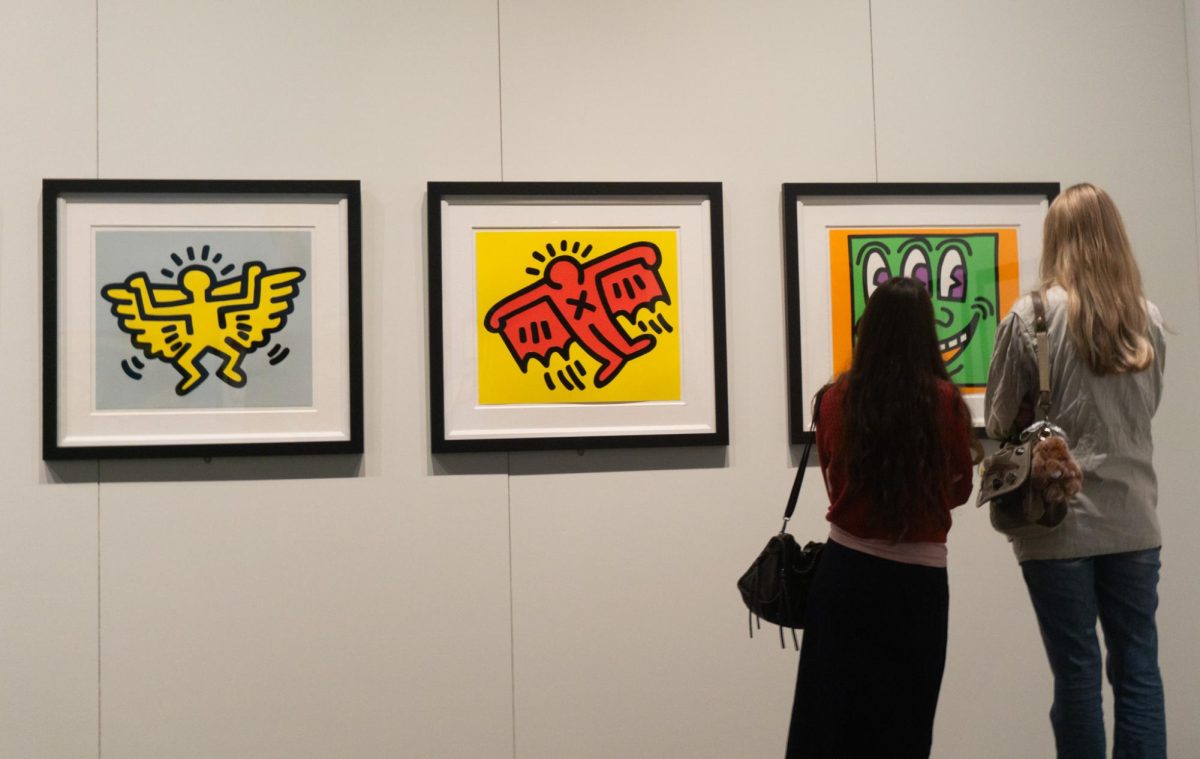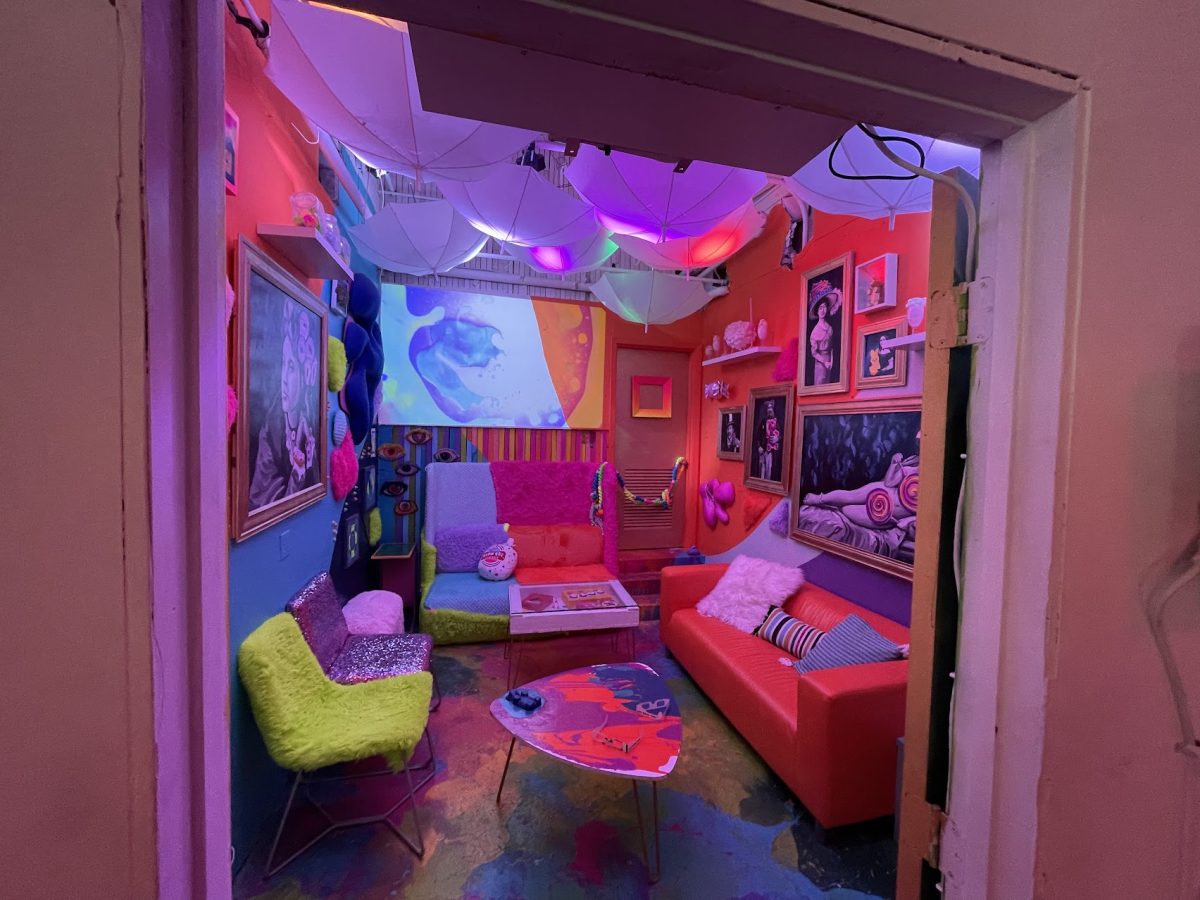Located just on the edge of campus, the Hedreen Gallery and the Lee Center for the Arts is currently hosting Roots/Uproot, a gallery dedicated to the art of hair. Through a variety of materials and forms, the exhibit showcases the diversity and cultural importance of hair.
In our country’s current climate of political contention and prejudice, it has become more important than ever to celebrate the diversity and beauty of every culture. Hair, often a target of racism and texturism (a form of discrimination based on negative views of textured hair), serves as the inspiration for this greater theme. Braids, curls, wigs, hair coverings and accessories are all represented by the artists showcased.
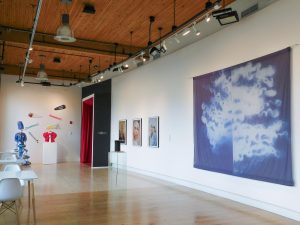 The space is small, yet very open and refreshing. Floor to ceiling windows line one wall looking onto 12th Avenue, making the gallery feel endless. The remaining walls house the art itself, including massive oil paintings by Portland-based artist Sa’rah Melinda Sabino and colorful photographs of Latinx women and families by Thalía Gochez. Both artists’ works reflect the raw, realistic lives of women as shown through the way they present their hair and the rest of their appearance.
The space is small, yet very open and refreshing. Floor to ceiling windows line one wall looking onto 12th Avenue, making the gallery feel endless. The remaining walls house the art itself, including massive oil paintings by Portland-based artist Sa’rah Melinda Sabino and colorful photographs of Latinx women and families by Thalía Gochez. Both artists’ works reflect the raw, realistic lives of women as shown through the way they present their hair and the rest of their appearance.
Gallery Assistant Sam Breno, a second-year interdisciplinary arts major, has had the chance to observe the gallery and its visitors from their post at the front desk. Being able to sit with and reflect on the art has made them think more about how features like hair impact how we interact with each other and the rest of the world.
“There are so many things within our everyday lives that we don’t even realize are a kind of art or can say so much about us,” Breno said. “I think focusing on something like hair can really get us to realize how much we communicate through our physical appearance.”
At one end of the gallery hangs a collection of large plush hair clips created by local textile artist Shiloh Davies. Davies is heavily inspired by and involved in the local drag scene, the aesthetics of which feature prominently in their art and celebrate the importance of personal expression within the queer community. The elaborate fabric wigs they have on display are not only eye-catching, but created in an environmentally conscious way using fabric from second-hand stores.
“I thought it was really cool how the materials that were used for most of them were not what I’d typically expect, especially the second-hand fabric,” commented First-year Psychology Major Kai Williams after observing Davies’ work. “If someone was going to do a fiber art or textile piece, I’d expect them to go out and find the exact fabric that they wanted for their piece. Instead they went second-hand, so it’s conveying the same message but also allowing it to be more sustainable.”
Another unique choice of materials can be found in the work of Nadia Ahmed, a Pakistani-American artist based in Seattle. Ahmed’s work combines beeswax and human hair into words and shapes. Their 2021 piece “Heirloom,” a pair of outstretched beeswax hands cradling a bundle of hair, is particularly impactful. It asks the viewer to reflect on the traits passed down along their family line and to celebrate the cultural gifts they’ve been given.

“I feel like hair can be kind of creepy sometimes, like when it’s taken off the head,” Maya Stefanovic, a first-year psychology major who visited the gallery, said.
“But I thought it was really beautiful the way it was used. It took me a second to realize what I was looking at, and that was super interesting. It felt very human, very emotionally raw,” Stefanovic said.
In the direct center of the gallery, able to be seen from the street, hangs a nearly floor to ceiling tapestry showcasing a cyanotype photograph of curly, textured hair. This style of camera-less, chemical based photography uses UV light to create a dark blue backdrop with white curls layered on top, similar to a cloud floating across the sky. This piece, “Migration Studies (No. 49, The crime = running, a constellation)” by Portland-based artist Lisa Jarrett, ties the gallery together beautifully.
Gallery Assistant Benjimen Whiteaker’s favorite part of the exhibit is how different and unique each piece is.
“I really enjoy that there’s multiple different artists and that they all kind of centered around one idea. There are so many different perspectives and ways to approach it, which is super interesting. The diversity of the art really represents the diversity of the subject matter,” Whiteaker said.
Roots/Uproot can be seen at Seattle University’s Hedreen Gallery on 12th Avenue for free until Jan. 4, 2025.


